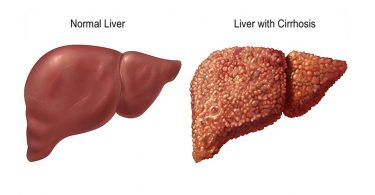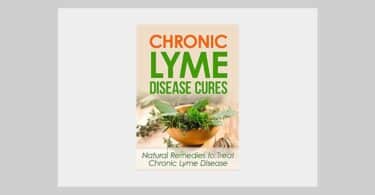The term anosmia derives from the Greek an (without) and osme (odor); it refers to the absence or impairment of the sense of smell. Hyposmia refers to diminished olfactory functioning. Synonyms for this condition include anosmia, anosphrasia, and olfactory anesthesia. Organic forms of anosmia are categorized as afferent (related to impaired conductivity of the olfactory nerve), central (due to cerebral disease), obstructive (related to obstruction of the nasal fossa), and peripheral (due to diseases of peripheral olfactory nerves).
The most common cause of anosmia is a several head cold or respiratory infection, which intranasal swelling blocks the nasal passages, preventing odors from reaching the olfactory region. This type of anosmia is temporary. Other organic causes of this condition include neoplasms (tumors), head injuries, or chronic rhinitis associated with granulomatous disease.
Anosmia also is a characteristic of olfactogenital dysplasia, also known as Kallman’s syndrome or anosmia eunuchoidism. This condition, more prevalent in males, is associated with lack of development of secondary sexual characterized and anosmia.
The apparently X-linked autosomal dominant or recessive inheritable condition is associated with dysfunction of the hypothalamus and the pituitary. Anosmia with these etiologies typically is a permanent condition. Decreased sense of smell, microsmia, is also common with aging and among smokers.
Psychological forms of anosmia, while less common, may occur. Phobias or fears have been identified as precipitating such forms of anosmia. Specific types of anosmia include anosmia gustatoria (loss of the ability to smell foods) and preferential anosmia (loss of the ability to smell certain odors), provides a detailed description of conditions associated with a disturbance of olfaction and excellent clinical analyses with children.
Anosmia Causes
- A. Allergic and vasomotor rhinitis
- N. Nasal obstruction: deviated nasal septum
- O. Olfactory nerve affections
- S. Sub-arachnoid hemorrhage
- M. Meningitis and neurosyphilis
- I. Idiopathic
Intracranial lesions e.g. absences, tumor, infection, etc.
- A. atrophic rhinitis
Differential Diagnosis
Head or facial trauma
- Probably the second common cause of anosmia
- May result in permanent anosmia
- CNS rhinorrhea may occur
Post upper respiratory viral infection
- Accounts for 20%-30% of causes of anosmia
Nasal and sinus disease
- The most common cause of anosmia
- Allergic or vasomotor rhinitis and sinusitis result in temporary anosmia.
- Intranasal polyps may result in obstruction of nasal passages with temporary anosmia.
Iatrogenic
- Amphetamines
- Certain antibiotics (e.g., amikacin, doxycycline, amoxicillin, clarithromycin)
- Nasal steroids
- Antithyroid agents
- Radiation
Poisoning
- Chemical pollutants
- Heavy metals (e.g., lead)
- Volatile organic compounds
- Inorganic compounds (e.g., vanadium, chromates, cadmium)
Iiicit drugs
- Intranasal cocaine
Granulomatous disease with destruction of the olfactory nerve
- Wegener’s granulomatosis
- Sarcoidosis
CNS disorders
- Alzheimer’s disease
- Parkinson’s disease
- Anxiety disorders
Neoplasms
- Meningioma of the olfactory groove
- Nasal cavity tumors
- Brain tumors
Endocrine disorders
- Diabetes mellitus
- Hypothyroidism
- Adrenal insufficiency
Congenial disorders
- Kallman’s syndrome
- Turner’s syndrome
Vitamin deficiencies
- Malnutrition
- Vitamin B12 deficiency (pernicious anemia)
- Niacin deficiency (pellagra)
- Zinc deficiency
Diagnostic Workup & Initial Management
History and physical examination
- Assess onset and duration, associated symptoms (e.g., allergic symptoms), recent head trauma, exposure (particularly to intranasal zinc), medications, and past medical and surgical history.
° Rhinitis and sinusitis may be associated with chronic nasal congestion, rhinorrhea, postnasal drip, pale or boggy nasal mucosa, sinus swelling and tenderness, and headaches.
° Upper or lower respiratory symptoms and renal involvement suggest Wegner’s granulomatosis.
- Include a complete head and neck exam and a full neurologic exam.
° Enlarged nasal turbinates suggest sinusitis (turbinates are pale and boggy in chronic allergic sinusitis and erythematous in non-allergic sinusitis)
° Assess for septal disease (midline granulomas) and polyps
Initial diagnostic workup
- Several types of smell tests are available:
– Olfactory threshold and odor identification test
– University of Pennsylvania scratch and sniff test
– Alcohol sniff test
- Initial laboratory testing may include CBC, electrolyte, glucose, BUN and creatinine, calcium, ESR, thyroid profile, liver function tests, and vitamin B12 level.
- Blood and/or urine toxicology screen if suspect drug use or poisoning.
- Nasal discharge testing for ?-transferrin in CSF
- Head CT may be indicated to evaluate skull base, brain, nasal cavity, and sinuses.
- MRI may be indicated to evaluate brain and soft facial tissues.
- Antibodies to Ro/SSA and LA/SSB are positive in Sjogren’s syndrome.
Initial patient management
- Temporary anosmia because of nasal and/or sinus disease is usually successfully treated medically with systemic and/or intranasal corticosteroids, antibiotics if coexisting bacterial infection is present, antihistamines and avoidance measure if an allergic component exists, or decongestants and/or saline lavage for nasal congestion.
– Polypectomy and sinus surgery may be necessary if initial therapy is ineffective.
- No cure is available for permanent anosmia (e.g., from post viral infections, trauma, congenital disorders); however, regeneration of neural elements may occur over a period of days to years.
- Anosmia caused by CNS and endocrine disease requires treatment of the underlying illness.
- Vitamin and mineral supplementation in cases of deficiency.
Homeopathic treatment of Anosmia symptoms – Homeopathy is one of the most popular holistic systems of medicine. The selection of remedy is based upon the theory of individualization and symptoms similarity by using holistic approach. This is the only way through which a state of complete health can be regained by removing all the sign and symptoms from which the patient is suffering. The aim of homeopathy is not only to treat Anosmia symptoms but to address its underlying cause and individual susceptibility. As far as therapeutic medication is concerned, several remedies are available to cure Anosmia symptoms that can be selected on the basis of cause, sensations and modalities of the complaints. For individualized remedy selection and treatment, the patient should consult a qualified homeopathic doctor in person. There are following remedies which are helpful in the treatment of Anosmia symptoms:
Alumina, Anacardium, Hepar Sulph, Kali Bi, Mag Mur, Natrum Mur, Pulsatilla, Belladonna, Aurum Met, Calcaria Carb, Ignatia, Iodum and many other medicines.
References:
Cecil R. Reynolds, Elaine Fletcher Janzen; Encyclopedia of Special Education: A-D; 2007; 135
Scott Kahan, Redonda Miller, Ellen G. Smith; in a page: Signs and symptoms; 2008; 24
Parmar HB; Mnemonics in Internal Medicine & Pediatrics; 2002; 08




Sir, I have been using belladonna for almost 2 weeks but haven’t got my smell back, not even slightest smell.
My test buds are also not improved ?
Please suggest.
I have a nasal polyp and was advised surgery. I have lost my sense of smell and a bit of taste. Is it possible to take advise online as I do not stay in Hyd.